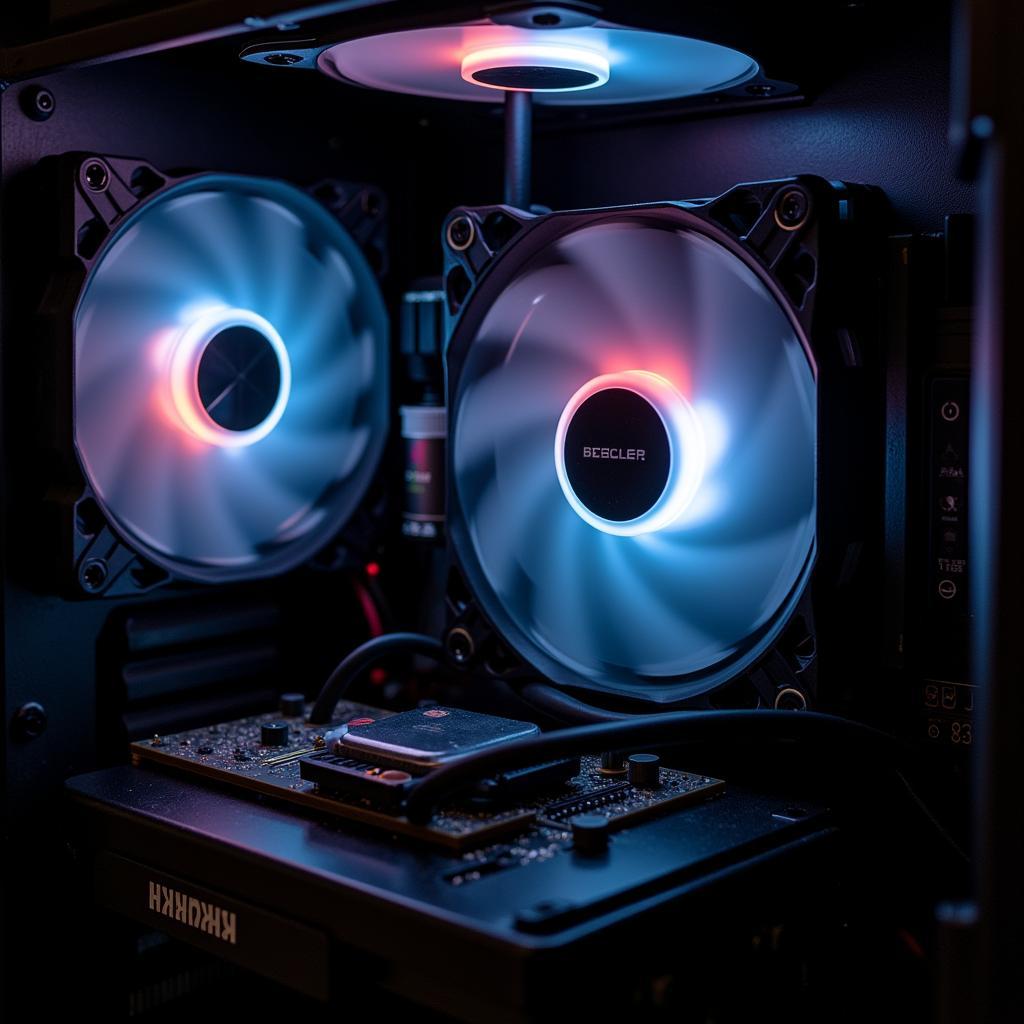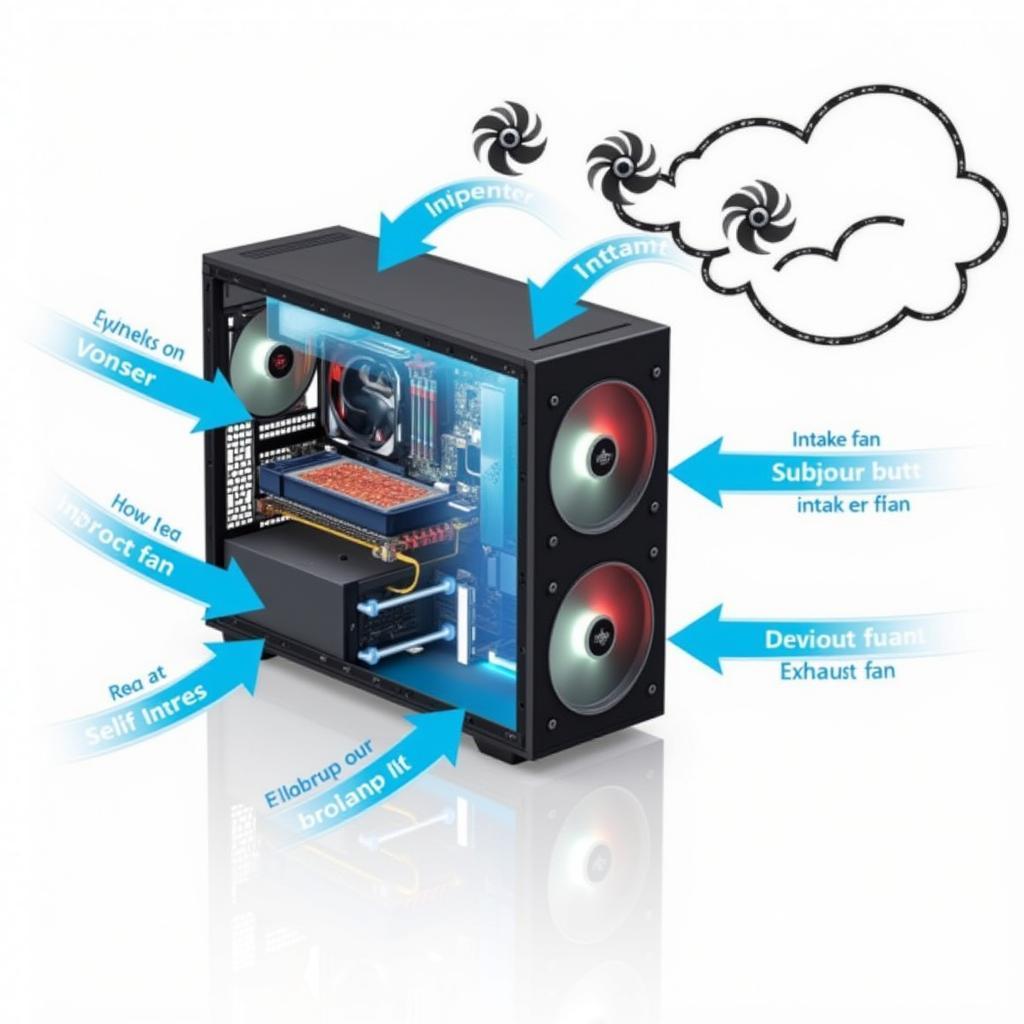When building or upgrading a PC, ensuring proper cooling is crucial for performance and longevity. A key component in achieving optimal airflow within your case is selecting the right case fans. With a plethora of options available, choosing the best fan for your specific needs can be overwhelming. This comprehensive guide will equip you with the knowledge to make an informed decision, covering everything from fan types and sizes to noise levels and airflow optimization.
Understanding the Basics: Why Case Fans Matter
 PC case fan cooling down overheating components
PC case fan cooling down overheating components
Case fans play a vital role in maintaining a healthy thermal environment inside your computer. They work by circulating air, expelling hot air generated by components like the CPU, GPU, and motherboard, and drawing in cooler air from outside the case. Without adequate airflow, these components can overheat, leading to performance throttling, system instability, and even permanent damage.
Types of Case Fans: Axial vs. Blower
There are two primary types of case fans: axial and blower. Each has its own advantages and is suited for different applications.
-
Axial fans: These are the most common type found in PC cases. They function similarly to a propeller, pulling air in along their axis and expelling it in the same direction. Axial fans excel at moving large volumes of air and are generally quieter than blower fans.
-
Blower fans: These fans feature a cylindrical design that draws air in from one side and expels it out the other in a more concentrated stream. While they don’t move as much air as axial fans, their focused airflow makes them ideal for cooling specific components, such as heatsinks or radiators.
Key Factors to Consider When Choosing Case Fans
Selecting the right case fans involves considering several factors that impact their performance and compatibility with your setup.
1. Fan Size and Thickness
Case fans come in various sizes, with the most common being 120mm and 140mm. Larger fans can typically move more air at lower speeds, resulting in quieter operation. Additionally, fans have different thicknesses, typically ranging from 25mm to 38mm. Ensure your case has adequate clearance for the chosen fan thickness.
2. Airflow and Static Pressure
-
Airflow: Measured in cubic feet per minute (CFM), airflow indicates the volume of air a fan can move. Higher CFM generally means better cooling performance.
-
Static Pressure: Measured in millimeters of water column (mmH2O), static pressure refers to a fan’s ability to push air through restricted spaces, such as radiators or heatsinks with dense fin arrays. Fans with higher static pressure are better suited for these applications.
3. Noise Levels
Fan noise is measured in decibels (dB). Lower dB ratings indicate quieter operation. Generally, larger fans running at lower RPMs tend to be quieter. Look for fans with noise-dampening features like rubber pads or hydrodynamic bearings for quieter operation.
4. Bearing Type
The type of bearing used in a fan affects its lifespan, noise levels, and performance. Common bearing types include:
-
Sleeve bearings: These are the most affordable but also the least durable. They tend to be louder and have a shorter lifespan, especially at higher RPMs.
-
Ball bearings: More durable and longer-lasting than sleeve bearings, ball bearings offer smoother operation and lower noise levels.
-
Fluid dynamic bearings: These bearings use a fluid layer to reduce friction, resulting in quieter operation and increased lifespan.
5. Connectivity and Control
Case fans can connect to your motherboard via various headers, including 3-pin, 4-pin PWM, or Molex connectors.
-
3-pin fans: These offer basic voltage control but have limited speed control options.
-
4-pin PWM fans: These allow for more precise fan speed control based on temperature readings, leading to quieter operation and optimized cooling.
Optimizing Case Fan Setup: Intake and Exhaust
 Diagram illustrating effective case fan placement for optimal airflow
Diagram illustrating effective case fan placement for optimal airflow
To maximize cooling efficiency, it’s essential to create a balanced airflow pathway within your case. This involves strategically positioning intake fans to draw in cool air and exhaust fans to expel hot air.
- Intake fans: Typically placed at the front and bottom of the case.
- Exhaust fans: Commonly situated at the rear and top of the case.
A general rule of thumb is to have slightly more intake than exhaust fans to create positive air pressure within the case, preventing dust buildup.
Conclusion: Making the Right Choice for Your Needs
Choosing the right case fans is essential for maintaining optimal PC cooling. By carefully considering factors like fan size, airflow, static pressure, noise levels, and bearing type, you can select fans that meet the specific requirements of your build and ensure a cool, quiet, and stable system. Remember to prioritize a balanced airflow configuration with strategically placed intake and exhaust fans to maximize cooling efficiency and prolong the life of your components.


